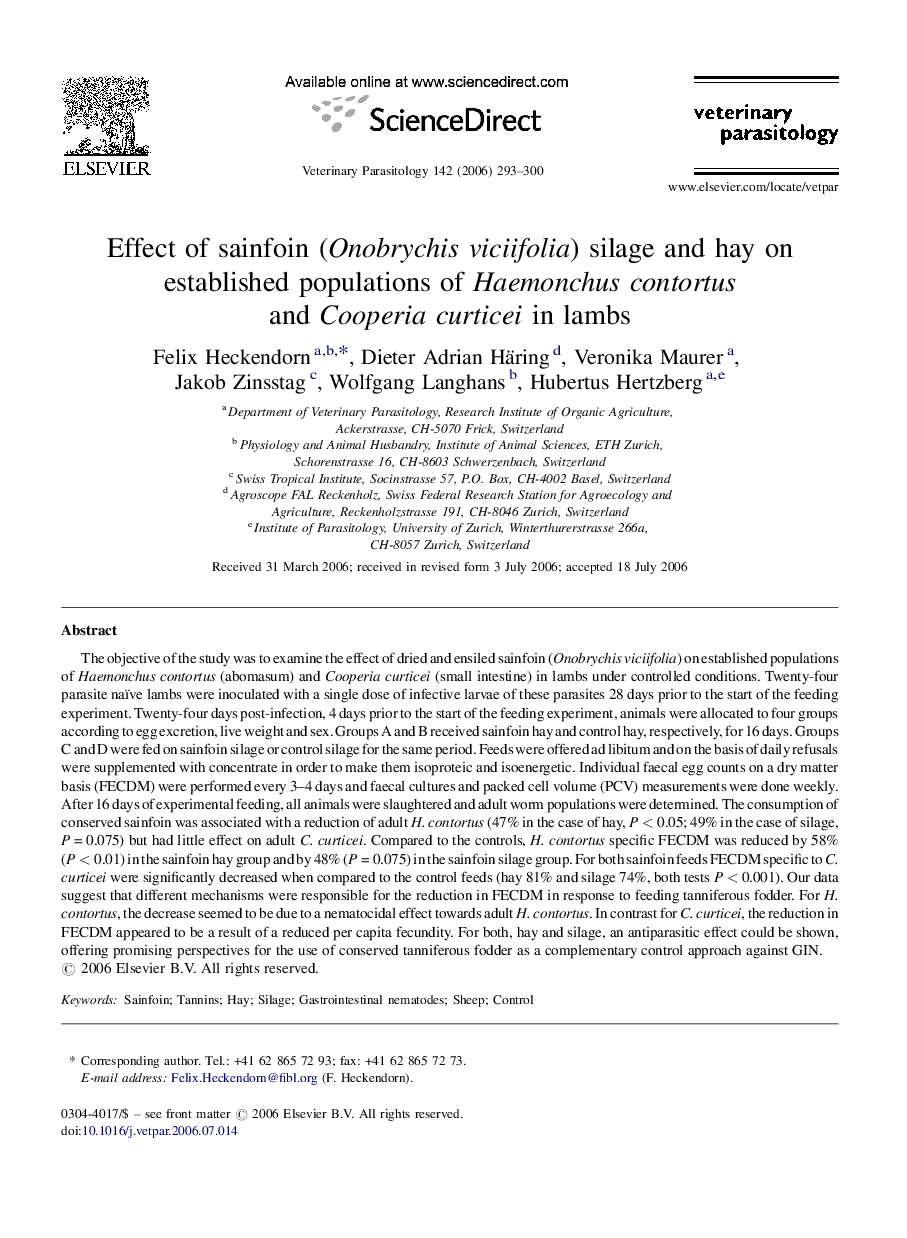| کد مقاله | کد نشریه | سال انتشار | مقاله انگلیسی | نسخه تمام متن |
|---|---|---|---|---|
| 2472349 | 1555788 | 2006 | 8 صفحه PDF | دانلود رایگان |

The objective of the study was to examine the effect of dried and ensiled sainfoin (Onobrychis viciifolia) on established populations of Haemonchus contortus (abomasum) and Cooperia curticei (small intestine) in lambs under controlled conditions. Twenty-four parasite naïve lambs were inoculated with a single dose of infective larvae of these parasites 28 days prior to the start of the feeding experiment. Twenty-four days post-infection, 4 days prior to the start of the feeding experiment, animals were allocated to four groups according to egg excretion, live weight and sex. Groups A and B received sainfoin hay and control hay, respectively, for 16 days. Groups C and D were fed on sainfoin silage or control silage for the same period. Feeds were offered ad libitum and on the basis of daily refusals were supplemented with concentrate in order to make them isoproteic and isoenergetic. Individual faecal egg counts on a dry matter basis (FECDM) were performed every 3–4 days and faecal cultures and packed cell volume (PCV) measurements were done weekly. After 16 days of experimental feeding, all animals were slaughtered and adult worm populations were determined. The consumption of conserved sainfoin was associated with a reduction of adult H. contortus (47% in the case of hay, P < 0.05; 49% in the case of silage, P = 0.075) but had little effect on adult C. curticei. Compared to the controls, H. contortus specific FECDM was reduced by 58% (P < 0.01) in the sainfoin hay group and by 48% (P = 0.075) in the sainfoin silage group. For both sainfoin feeds FECDM specific to C. curticei were significantly decreased when compared to the control feeds (hay 81% and silage 74%, both tests P < 0.001). Our data suggest that different mechanisms were responsible for the reduction in FECDM in response to feeding tanniferous fodder. For H. contortus, the decrease seemed to be due to a nematocidal effect towards adult H. contortus. In contrast for C. curticei, the reduction in FECDM appeared to be a result of a reduced per capita fecundity. For both, hay and silage, an antiparasitic effect could be shown, offering promising perspectives for the use of conserved tanniferous fodder as a complementary control approach against GIN.
Journal: Veterinary Parasitology - Volume 142, Issues 3–4, 20 December 2006, Pages 293–300